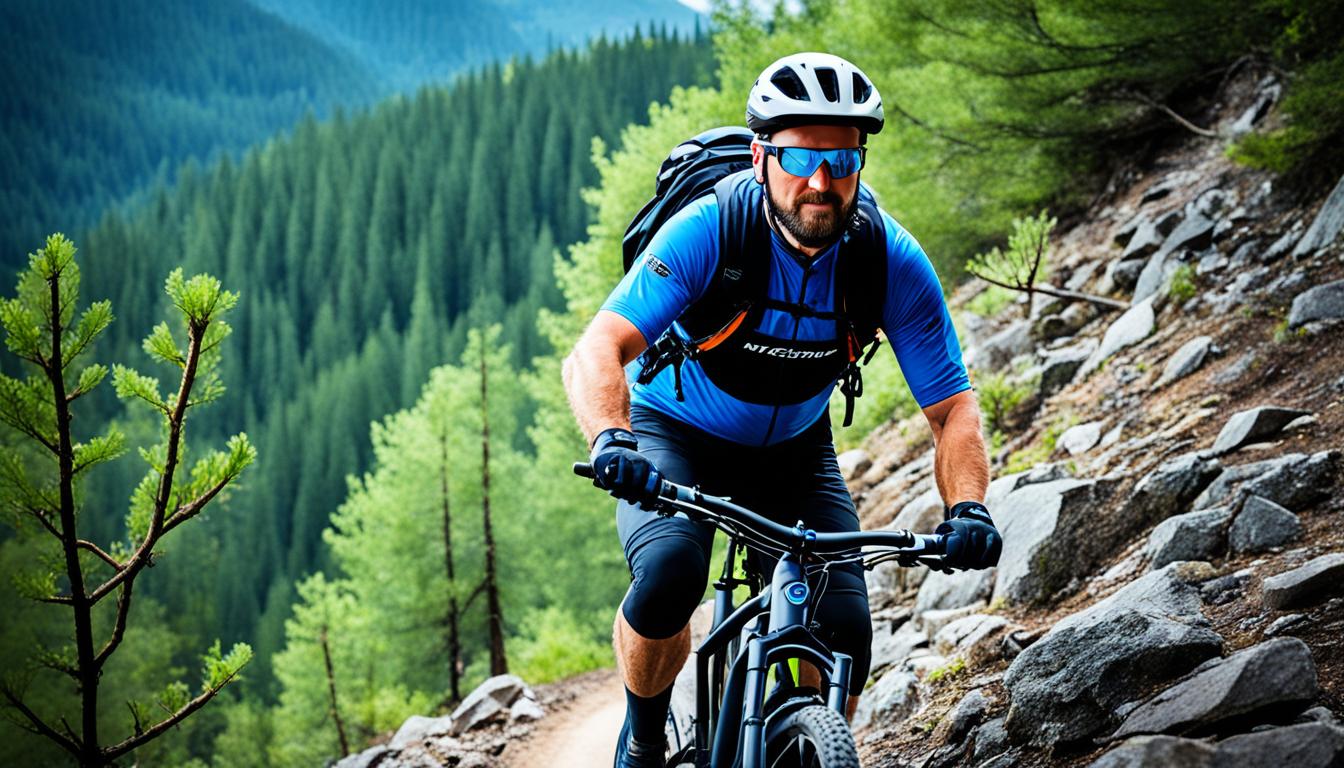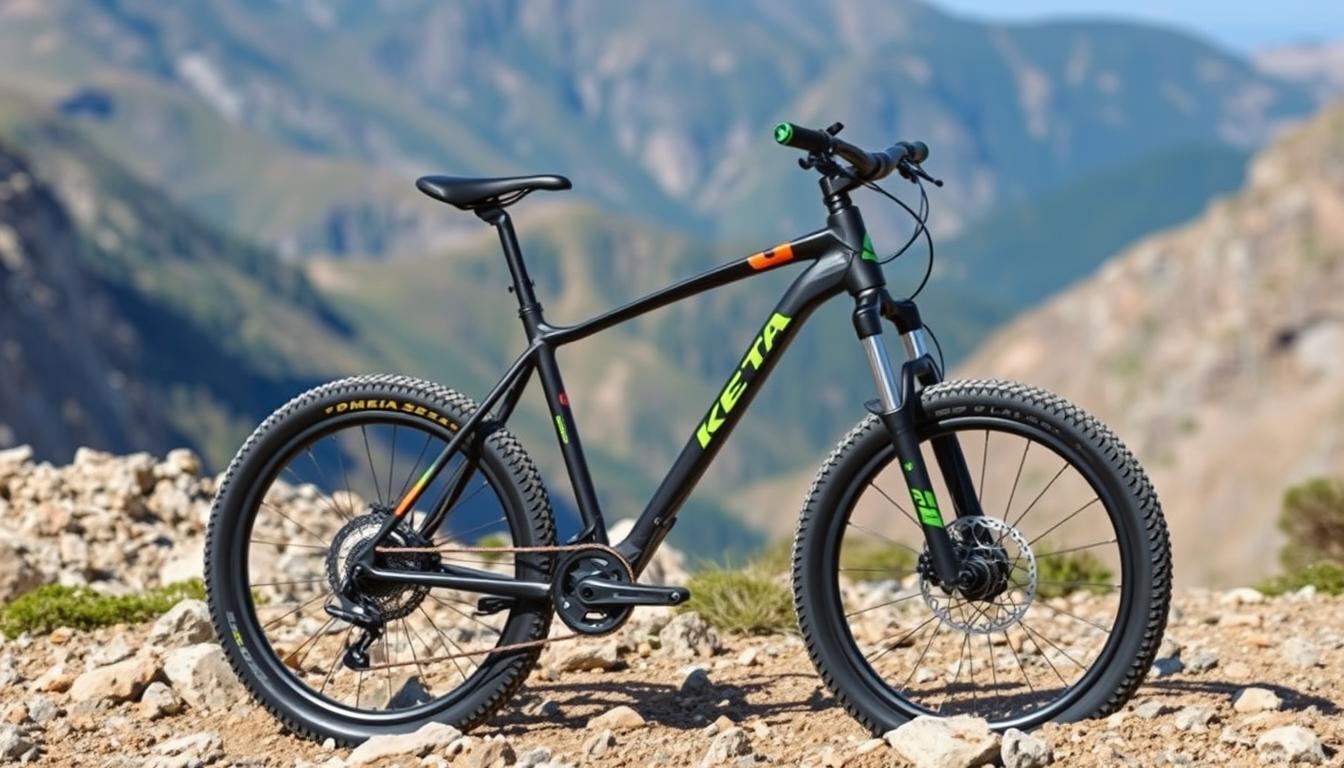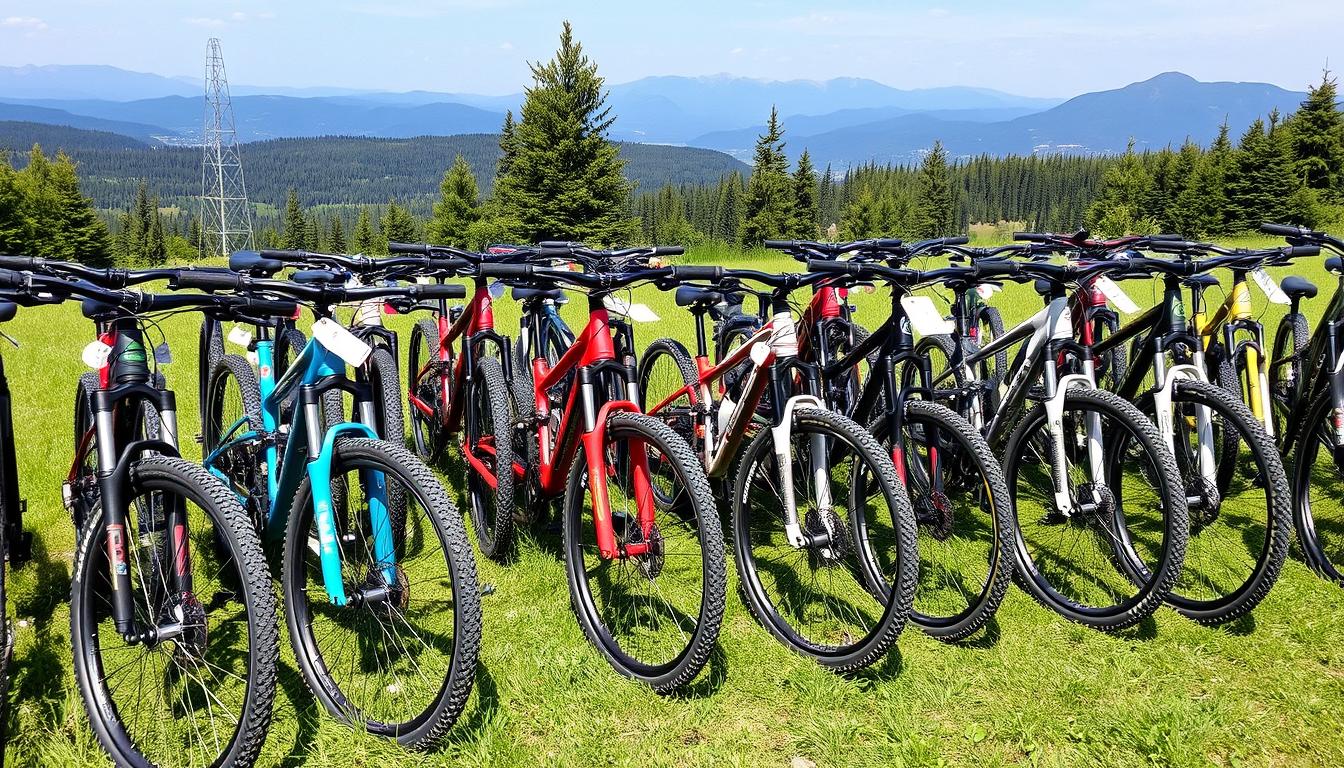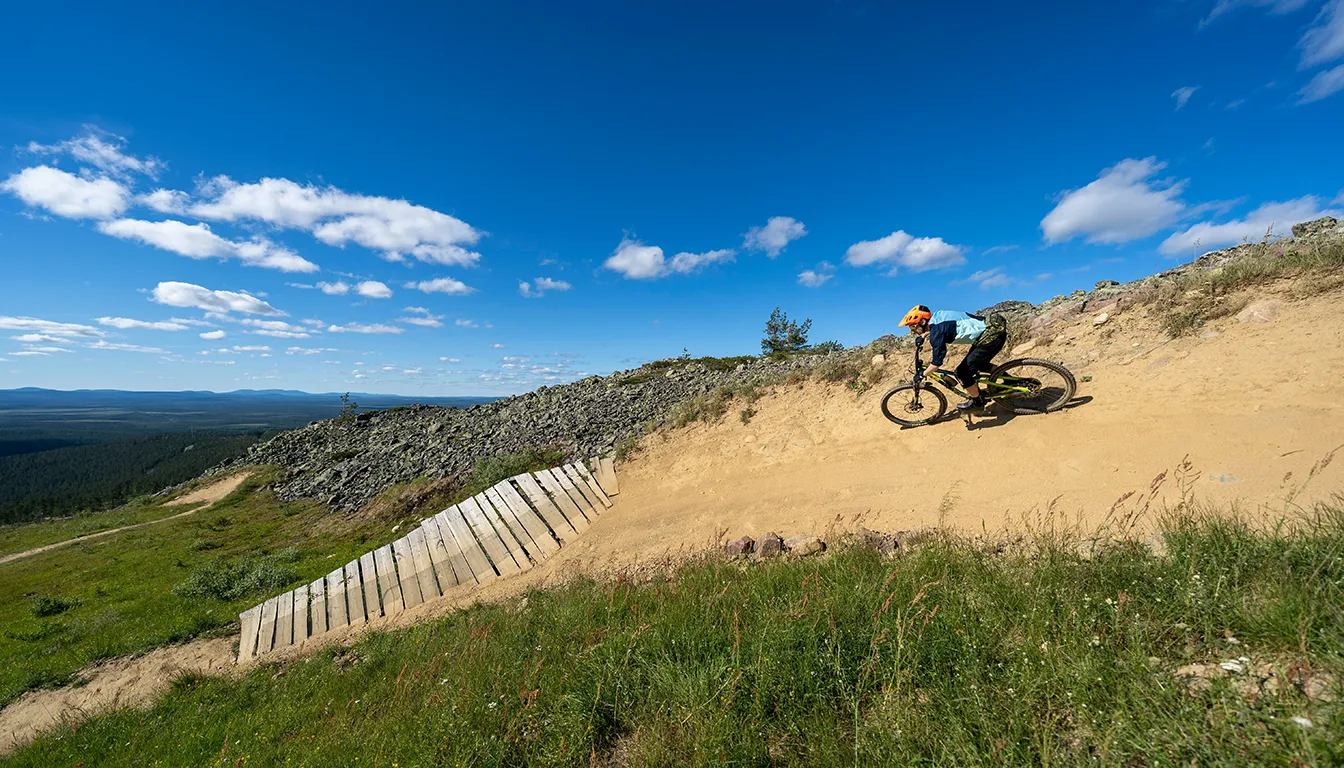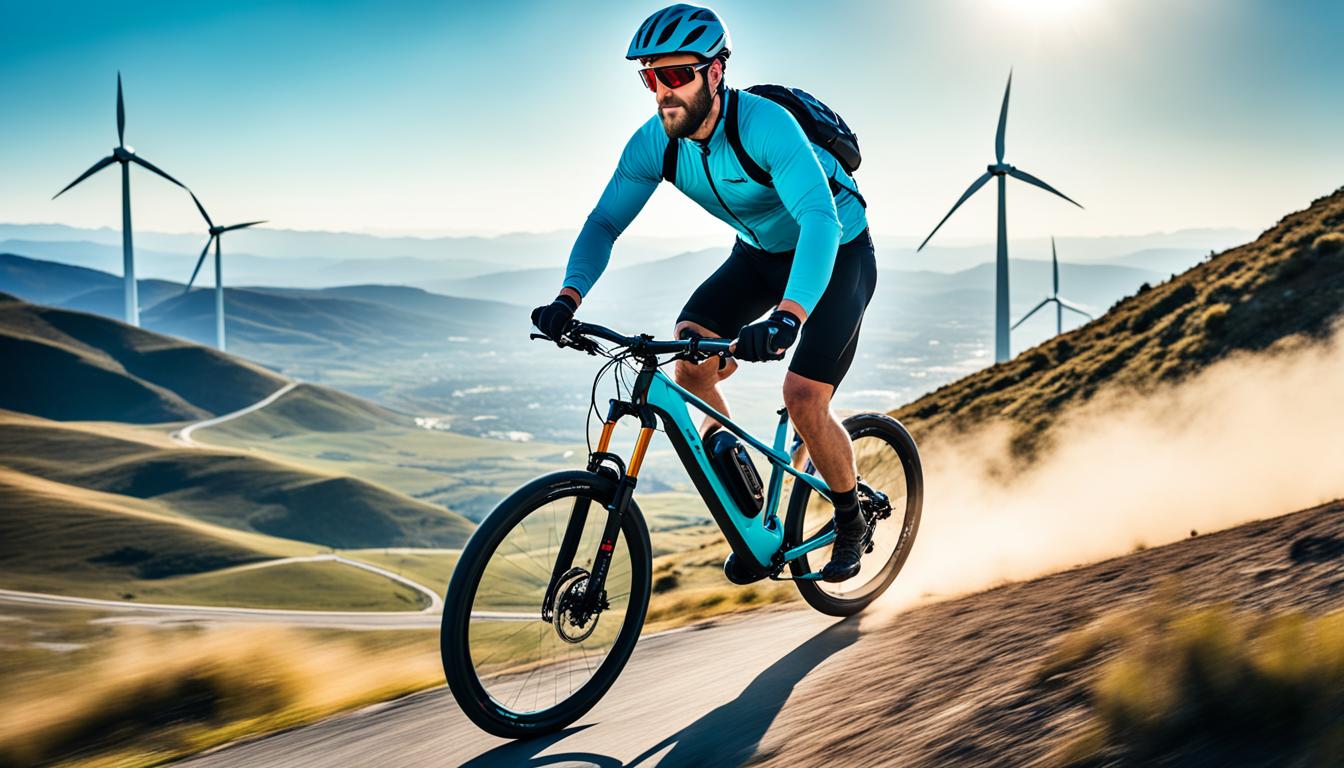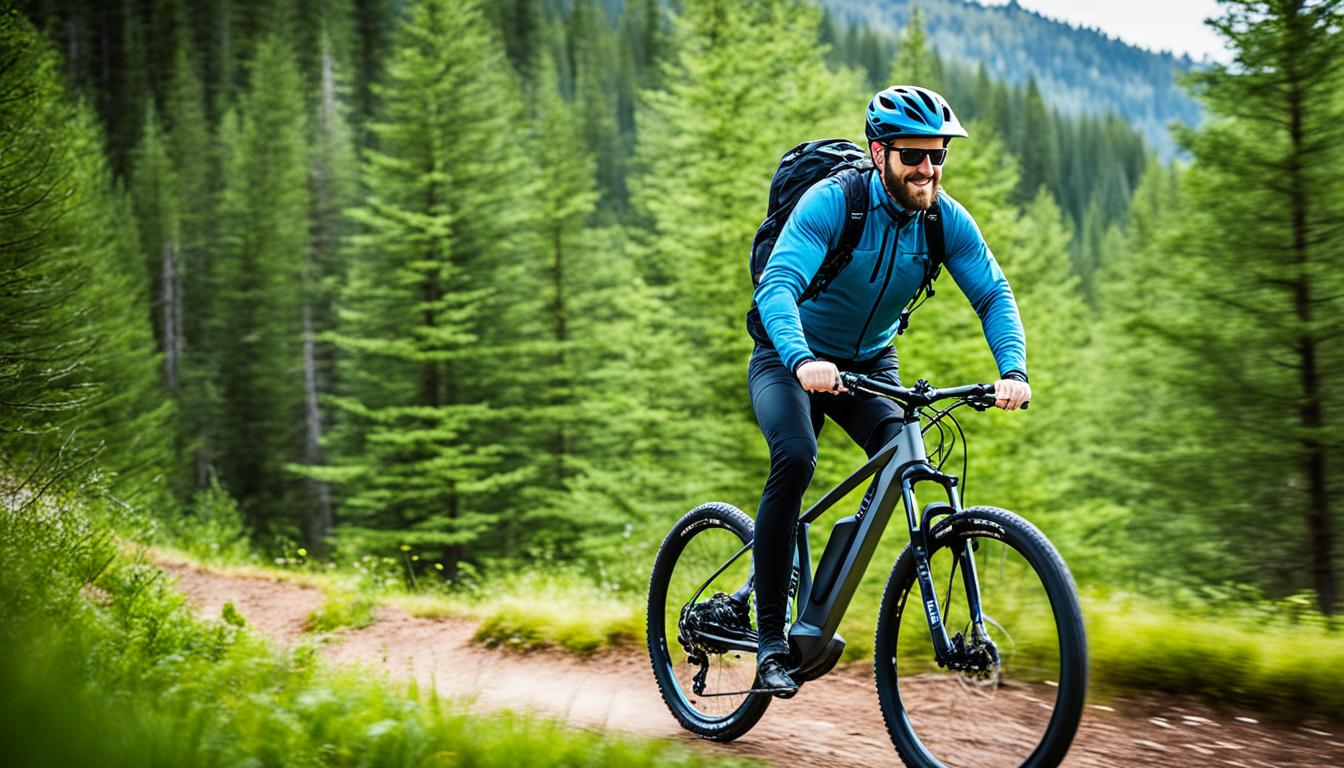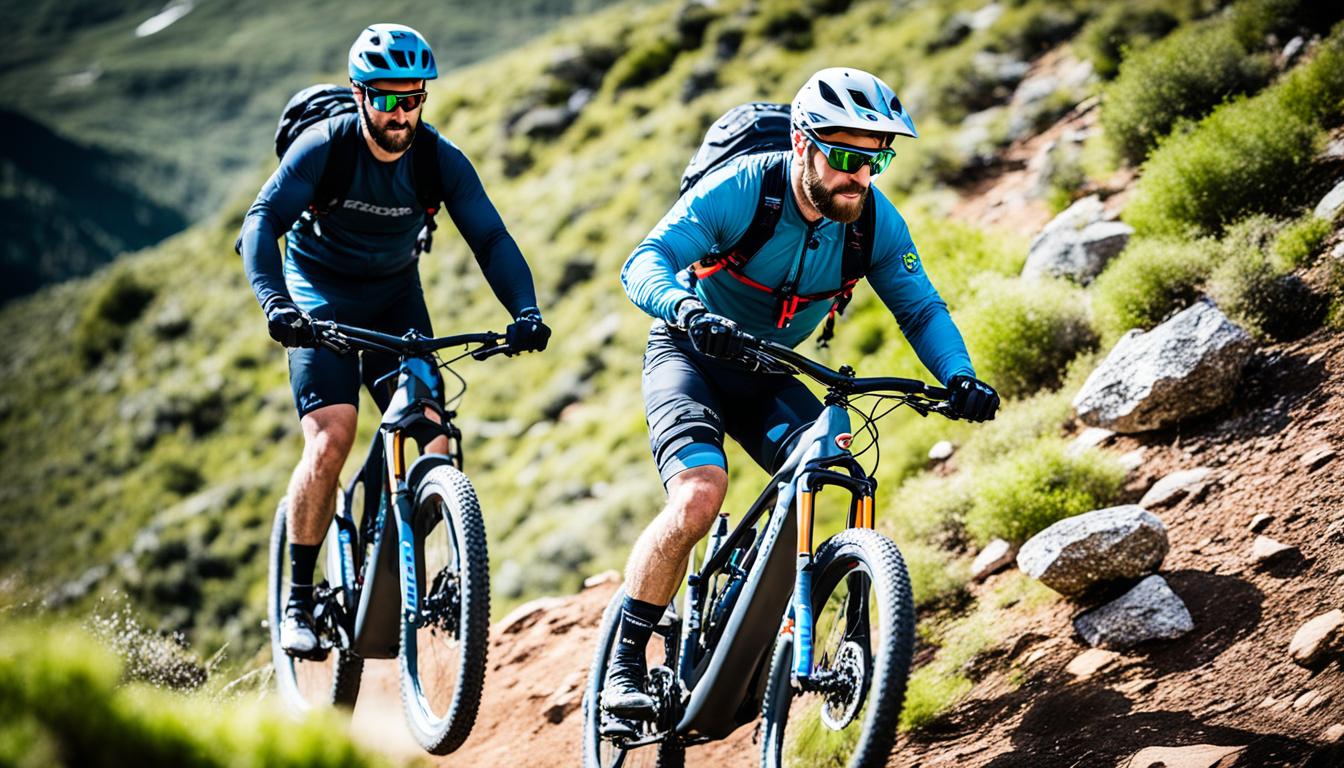Riding mountain trails on an e-bike is exciting and lets you see the UK’s beauty in a new way. It’s perfect for anyone, from experts to those just starting out. E-bikes allow you to go further, making tough trails easy and fun. When you ride, remember to focus on adventure and stay safe.
This article will show you key techniques for better e-bike mountain rides. You’ll learn how to pick the right bike and how to climb hills. Get ready to make your mountain biking adventures even more amazing!
Understanding E-Bikes: A Quick Overview
Electric bikes, also known as e-bikes, are now popular. They are great for both keen cyclists and those who just love a casual ride. To make the most out of mountain trails, getting to know about e-bikes is key. We will look at what e-bikes are and the different types of e-bike motors out there.
What are Electric Bikes?
E-bikes, short for electrically assisted pedal cycles, come with an electric motor. This motor makes pedalling easier, so you can go further and tackle hills without as much sweat. By providing help when needed, e-bikes make biking more fun and less tiring.
How do E-Bikes Work?
E-bikes work smartly by sensing when you pedal. The motor then kicks in to give you a boost, making it easier to ride. They run on batteries that you’ll need to recharge after about 20 to 100 miles, depending on how and where you ride. This mix of traditional biking and new tech brings out the best in cycling.
The Three Main Types of E-Bike Motors
There are a few main types of e-bike motors, each suited to different riders’ needs. The most common types include:
| Motor Type | Location | Key Features |
|---|---|---|
| Hub Motors | Front or Rear Wheel | Simple and cost-effective, ideal for entry-level e-bikes |
| Mid-Drive Motors | Near Pedals | Offers better balance and performance on rugged terrain |
| Rear Wheel Motors | Rear Wheel | Improved traction, perfect for steep inclines |
Knowing about these e-bike motors helps you choose the right one for mountain biking. The right motor not only improves performance but also boosts your comfort and enjoyment on the trails.
Preparing for Your Ride
Getting ready for mountain biking on an e-bike is key to having fun. Knowing which e-bike and gear to use makes a big difference. It keeps you safe and lets you do better on tough paths.
Choosing the Right E-Bike for Mountain Trails
Picking your e-bike needs careful thought. Consider the bike’s weight, as eMTBs are often heavier. Choose a bike that fits your style and strength. Look at the motor and battery, as they affect how well you climb and descend.
Essential Gear and Equipment
The right gear is crucial for safety and comfort. Start with a good helmet to keep your head safe. Wear light gloves for a better grip and strong shoes for controlling the bike. Pick clothes that move with you but also protect you from weather. Don’t forget a water pack and map to help you enjoy your journey.
How to Ride Mountain Trails on an E-Bike
Riding mountain trails on an e-bike is unique. You need to know special methods to manage different lands. The e-bike’s extra weight helps with grip on trails and improves how the suspension works. It’s key to use e-bike riding techniques right for the best performance.
To control your ride better, keep a low centre of gravity. This is especially vital during descents and tricky bits. Knowing when and how to shift your weight can change your experience. For tough spots, take an aggressive stance. For smoother parts, use a lighter touch to keep up speed.
Braking on an e-bike is different because they are heavier. You’ll need to start stopping earlier and over a longer distance. Adjusting your pedal strokes helps balance the weight for more stability. Also, shifting gears at the right time is crucial to avoid chain issues. When going downhill, a short push on the cranks saves energy. This tip and more are in a detailed mountain trails guide.
Take breaks in tough sections to get better. Be mindful of others when passing to keep a friendly vibe on the trails. In the UK, places like Bike Park Wales, Cannock Chase, and Coed y Brenin Forest Park are great to try these tips. Different skill levels are welcome. Below, see a table of these popular spots:
| Location | Trail Type | Distance | Skill Level |
|---|---|---|---|
| Bike Park Wales | Diverse trails | Hundreds of km | All levels |
| Cannock Chase | Technical trails | Varies | Families |
| Coed y Brenin Forest Park | Challenging runs | 90 km | Varied levels |
| Nevis Range | Blue, Red, Black | Various | All levels |
| Forest of Dean | Multi-use trails | 49 km | Suitable for e-bikes |
Mastering E-Bike Riding Techniques
Mastering essential e-bike riding techniques can make your mountain biking journey much better. It’s important to get a handle on cycling balance, cornering, and climbing. These skills improve your safety and fun on the trails. Let’s dive into the techniques that enhance your e-bike experiences.
Getting the Right Stance
Having the correct stance is key for stability while on your bike. Keeping low with bent arms helps you move smoothly over bumps. This posture not only boosts your balance but also gives you more control on tricky paths. It’s crucial to make sure your body is properly aligned for better trail navigation.
Effective Cornering Techniques
Understanding how to corner properly requires knowing your e-bike’s behaviour. It’s vital to trust how the bike feels; lowering your outside heel helps keep you gripped to the ground. By taking wider paths on turns, you avoid slipping. This approach lets you glide smoothly around bends, keeping you quick and secure.
Climbing Techniques for E-Bikes
Climbing with an e-bike takes specific skills. Adjusting your saddle height helps you stay in control uphill. Knowing when to shift gears keeps you moving smoothly and efficiently. It’s also important to keep a consistent pedal rhythm. This helps you save energy on steep climbs.
By practising these e-bike riding skills, you’ll grow more confident and proficient on different paths. For more advice on mountain biking, check out our guide on top biking trails suited for various levels of experience.
| Technique | Description |
|---|---|
| Stance | Low position with bent arms for stability on rough terrain. |
| Cornering | Lower outside heel and take wider lines to enhance grip. |
| Climbing | Adjust saddle height and time gear shifts for better control. |
Understanding E-Bike Safety and Regulations
When you ride e-bikes on mountain trails, safety comes first. Knowing the rules and wearing the right safety gear makes the ride better. Learning about e-bike safety UK laws helps keep riders safe and happy on their adventures.
UK E-Bike Laws and Licensing Requirements
In the UK, e-bikes are known as electrically assisted pedal cycles (EAPCs). You must be 14 or older to ride them. No need for a license or registration, making it easier for fans to get on board. E-bikes must:
- Not go faster than 15.5 mph (25 km/h).
- Have a motor that’s no more than 250 watts.
- Stop helping you speed up when you go too fast.
- Not be called motorcycles or mopeds unless they’re too powerful.
You can’t ride an e-bike that’s not registered or insured on public roads. They are only for private land with the owner’s okay. Knowing these cycling regulations keeps everyone safe and legal on the road.
Safety Gear and Best Practices
Wearing the right safety gear cuts down the chance of getting hurt. You need:
- Helmets to keep your head safe if you fall.
- Eye protection to keep out debris and bad weather.
- Reflective clothing to make sure others can see you when it’s dark.
It’s smart to carry tools and a first aid kit for surprises. Focusing on safety gear makes your ride better and keeps everyone doing the right thing on trails.
Maximising Your E-Bike’s Performance
Improving your e-bike’s effectiveness on mountain trails is essential for fun. Knowing how to change assistance levels according to the terrain helps a lot. It improves ride quality and extends your battery’s life.
Adjusting Assistance Levels for Terrain
It’s vital to adjust your e-bike’s settings for different terrains. E-bikes like those with Shimano’s EP8 system offer four modes: Walk, Eco, Trail, and Boost. Each mode has special features that you can customise with apps like E-Tube. This lets you shape the ride as you want.
Using lower settings on flat ground saves battery power. On steep slopes or rough trails, higher assistance helps a lot. Picking the right mode enhances terrain assistance and controls your e-bike’s performance.
Battery Management for Longer Rides
Managing your battery properly lets you ride longer. Watching your battery level stops you from getting stuck. Thanks to charging points around the UK, you can recharge and tackle long distances easily. E-bikes like HappyRun’s SUV E-Bike G50 can go over 68 miles on one charge. Still, battery life depends on its age, the terrain, and how you ride.
To keep your battery in top shape, charge it in a warm, dry place and check its condition often. By doing this, you’ll enjoy amazing trails in places mentioned in hidden biking gems in the UK to the fullest.
Conclusion
Riding mountain trails on an e-bike is both thrilling and a way to enjoy the outdoors. Electric mountain bikes let riders tackle various terrains. This is great for those with physical challenges. With the right biking tips, each ride becomes an unforgettable journey.
Sales of e-mountain bikes have soared by 240 percent over the year. This shows more people are finding joy in e-biking. Using correct techniques and knowing the rules, as outlined in etiquette guidelines, improves the ride for everyone. By being responsible, we ensure future generations can also enjoy these bikes.
In short, combining the excitement of e-biking with nature is great for fitness and connecting with the environment. It doesn’t matter if you’re tackling tough paths or just out for a gentle ride. This form of cycling leads to new adventures and possibilities. If you are advanced biker, make sure to read this article about handling steep terrain on an e-bike.
FAQ
What are the advantages of riding mountain trails on an e-bike?
E-bikes let you go further and tackle tough terrains easily. They allow you to see beautiful views with less effort than regular bikes.
Do I need to have experience before riding an e-bike on mountain trails?
Not really. E-bikes are for everyone, from experts to beginners. They offer fun and adventure on the trails for all skill levels.
How can I choose the right e-bike for mountain biking?
Think about the e-bike’s weight, motor, battery, and off-road features. EMTBs are built tough for rough trails and have powerful motors.
What essential gear should I wear when riding an e-bike on mountain trails?
Wear a helmet, gloves, strong shoes, and clothes right for the weather. Don’t forget a hydration pack and a map for safety and enjoyment.
How should I position myself while riding on steep descents?
Keep low by bending your knees and elbows when going downhill. This posture helps you stay in control and safe on bumpy paths.
Are there specific techniques for climbing with an e-bike?
Yes. Adjust your seat height for control and shift gears at the right time to keep moving up smoothly. Using the motor’s help makes climbs easier.
What are the UK laws regarding riding e-bikes?
E-bikes in the UK must be ridden by those 14 or older and adhere to a 15.5 mph speed limit. There’s no need for a license or registration.
What safety gear is recommended for e-bike riding?
Always wear a helmet, eye protection, and bright clothing. Bringing tools and a first aid kit is wise for trail emergencies.
How can I manage my e-bike’s battery effectively for longer rides?
Keep an eye on your battery and charge it in a dry place. Use charging stations across the UK to keep your adventures going.
